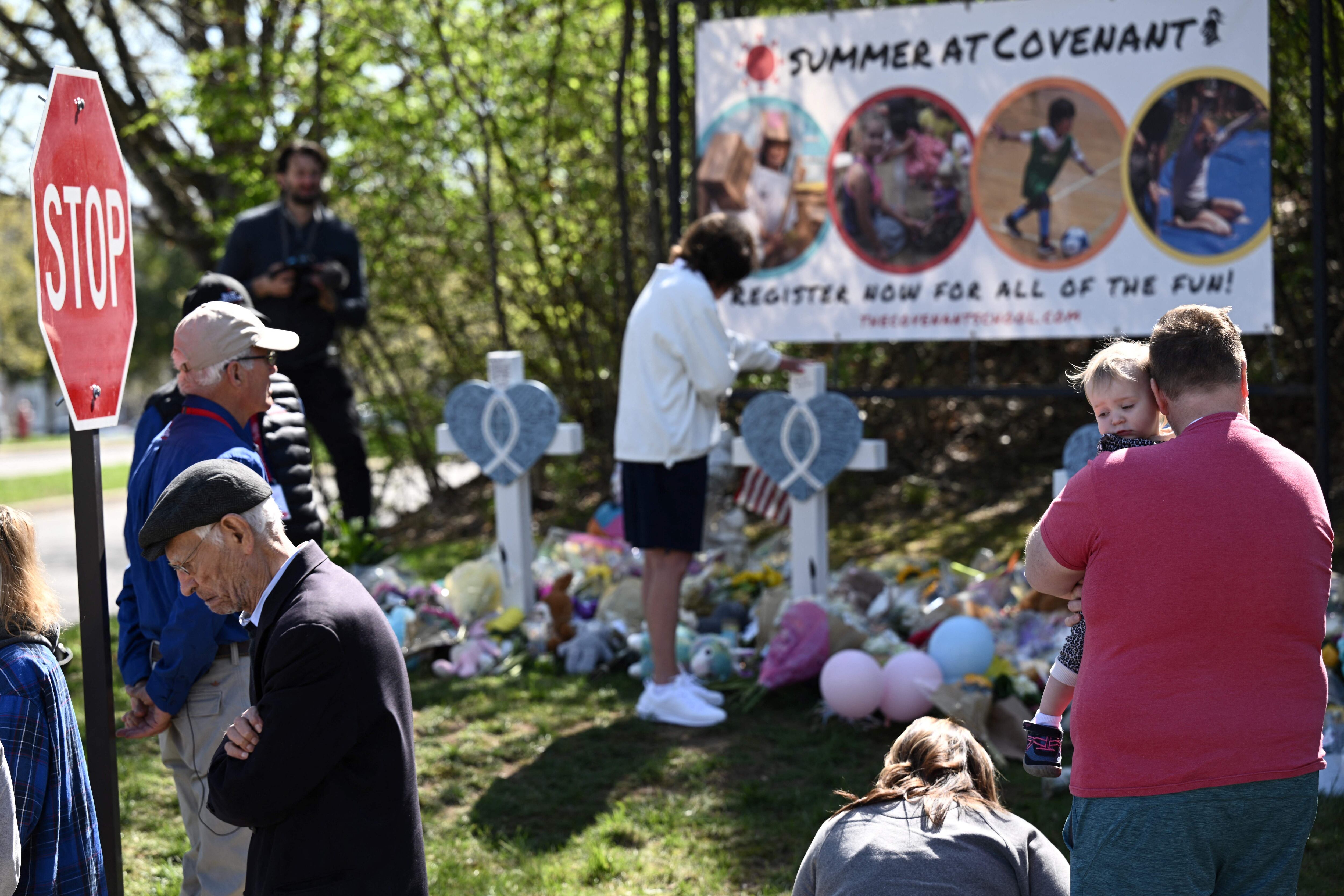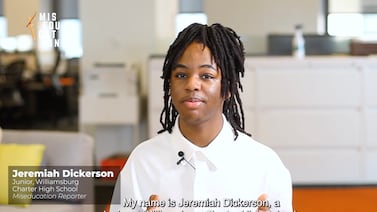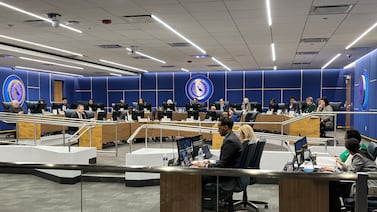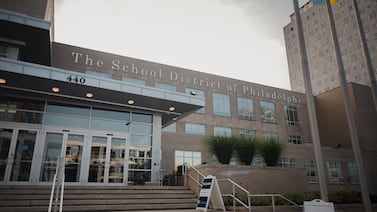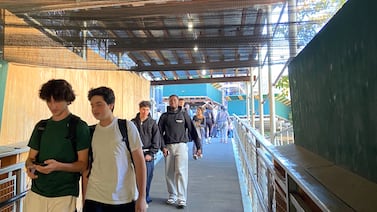When Superintendent Kenny Rodrequez first heard about last week’s fatal attack on a Nashville elementary school, he immediately ached for the three children and three adults who were gunned down.
But as a school district leader, he soon began an all-too-familiar routine. He studies news reports about each new school shooting, looking for ways to strengthen his own district’s security, aware that any school could be next.
“It’s not like it’s in some faraway land,” said Rodrequez, who heads a small district outside of Kansas City, Missouri. “It’s happening everywhere.”
The data confirms that school gun violence is pervasive — and spreading. The number of guns seized in schools and fired on school property has skyrocketed since before the pandemic, according to gun violence databases.
In response, schools have taken steps to mitigate safety risks and soothe anxious students, teachers, and parents. A Pennsylvania district is preparing to install metal detectors in its elementary schools, while students in a Maine district have learned how to barricade classroom doors and confront would-be attackers. Other districts that had cut ties with school police are bringing them back, while still others are teaching families how to safely store their firearms.
Many schools are trying to walk a fine line, seeking to enhance security without turning their campuses into forbidding fortresses or funnels into the criminal justice system. Meanwhile, a national debate over gun control is raging around schools, with Tennessee students walking out of schools Monday to demand tighter gun restrictions — even as some lawmakers propose loosening the state’s gun laws.
The debate can be exasperating for school officials, who cannot control students’ access to guns yet are expected to protect them from gun violence.
“Many times when there’s a shooting or a gun found in a school, people are like, ‘You’ve got to keep guns out of the schools,’” Rodrequez said. But he believes the conversation about guns must be broader: “We have to keep them out of our communities.”
Schools confront rising gun violence
Gun violence in children’s homes and neighborhoods is far more common than school shootings, which account for less than 1% of all gun deaths among American children.
Yet school gun violence has become more prevalent. Guns have been brandished or fired on school grounds more than 230 times this academic year, according to the K-12 Shooting Database, which tracks all gun-related incidents on school property, including those without injuries. The number of such incidents is down slightly from the same period last school year but up nearly 170% compared with that period pre-pandemic.
More students are also bringing guns to school. The Gun Violence Archive, which tracks news and police reports, has compiled roughly 850 instances of guns found in schools since last August. By contrast, just over 600 guns were found during that period last year, and fewer than 500 were found during that period pre-pandemic.
In Erie, Pennsylvania, Superintendent Brian Polito attributes some students’ growing entanglement with guns to the loss of stability and structure during remote learning. In addition, a citywide anti-violence campaign went on hiatus during the pandemic lockdowns.
“When the pandemic hit, everything kind of fell apart,” he said.
Exactly one year ago, a freshman at Erie High School allegedly shot another student inside the school — the first shooting in the district since the 1990s, Polito said. After the incident, the district installed metal detectors in all middle and high schools. Polito estimates the district has spent about $2 million in federal pandemic recovery funds over the past two years on security upgrades, including new alarm systems, door locks, and security cameras.
The high school shooting is part of a growing wave of youth violence in the community, and even very young students are getting pulled in. Polito said that when a local university recently identified students at high risk of violence based on crime and discipline data, the list included some elementary school students. That data, along with news in January that a 6-year-old Virginia boy had shot his teacher during class, convinced Polito to expand metal detectors to elementary schools.
“Unfortunately, it’s our reality now,” Polito said about gun violence, adding that the district has also ramped up mental health support for students. “It’s something we all have to deal with.”
Schools aim for safety without over-policing
Even in communities where gun violence is rare, schools face pressure to prepare. In Gorham, Maine, a small town just west of Portland, schools Superintendent Heather Perry said she hears from worried parents whenever a school shooting makes the national news.
“People are much more hypervigilant,” she said, adding that online videos can make a distant shooting feel “like it’s next door.”
After high-profile shootings, Perry sends messages to families reassuring them that the district has detailed safety plans. The district has also invested in security technology, including surveillance cameras that the police can access and electronic door locks. And the local police department guides schools in active shooter drills, which includes having middle and high school students practice distracting a gunman by throwing objects or shouting, Perry said.
But even as schools plan for the possibility of violence, Perry said she doesn’t want students to feel constantly scared or surveilled.
“We don’t want our schools to become prisons,” she said.
Some school districts have added guards, and a few have reinstated school police officers after removing them or reducing their numbers following the protests in 2020 over police brutality against Black people. Last month, after a Denver high school student shot and injured two staff members, the school board swiftly voted to lift its ban on armed school officers.
Critics of school police cite research showing that their presence leads to more student suspensions and arrests. They also worry about the potential for bias when school security is beefed up, with Black students, students with disabilities, and others facing closer scrutiny and even criminalization.
But proponents say school police, often called school resource officers, help reduce violence by defusing conflicts and developing relationships with students.
Mo Canady, executive director of the National Association of School Resource Officers, said he is not surprised to see schools bringing in more officers as gun violence surges.
“Schools are most definitely under pressure to try to figure out how to keep their students safe,” he said.
Still, he cautioned against hastily adding security agents, arguing that effective school police officers are highly trained in law enforcement and working with young people.
“In the rush to shore up” school safety, he said, “we can easily create a whole new problem if we don’t do this the right way.”
Patrick Wall is a senior reporter covering national education issues. Contact him at pwall@chalkbeat.org.

